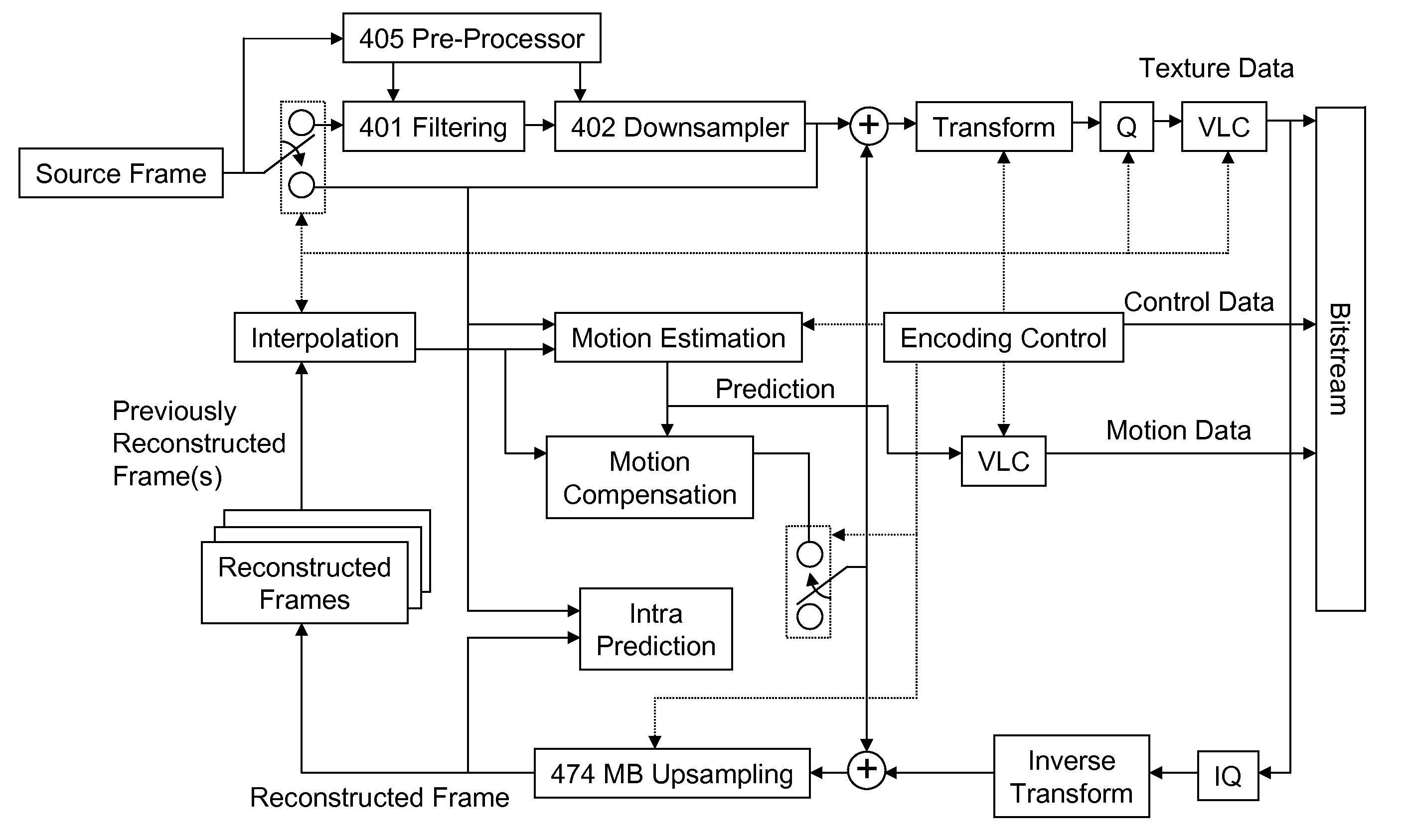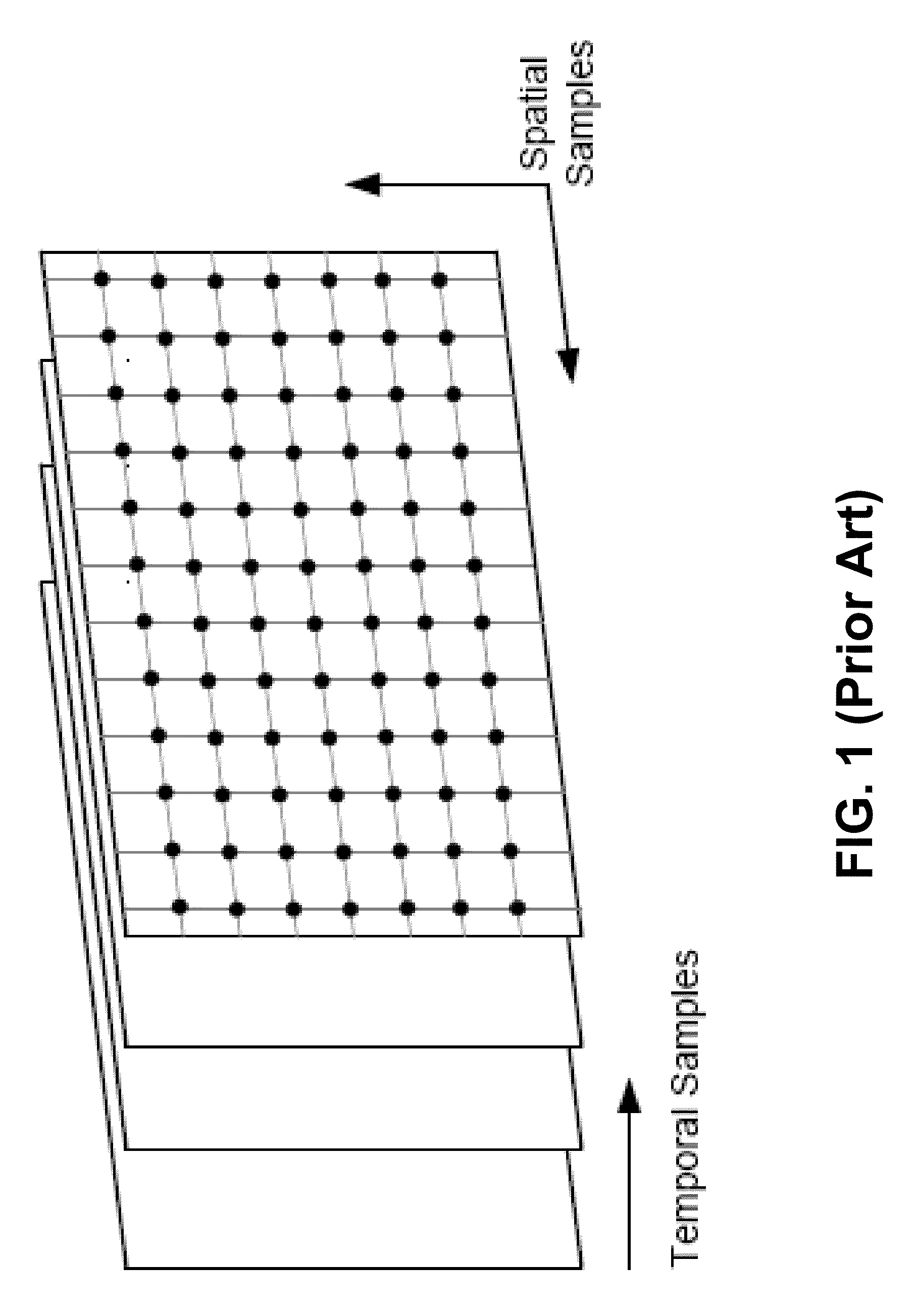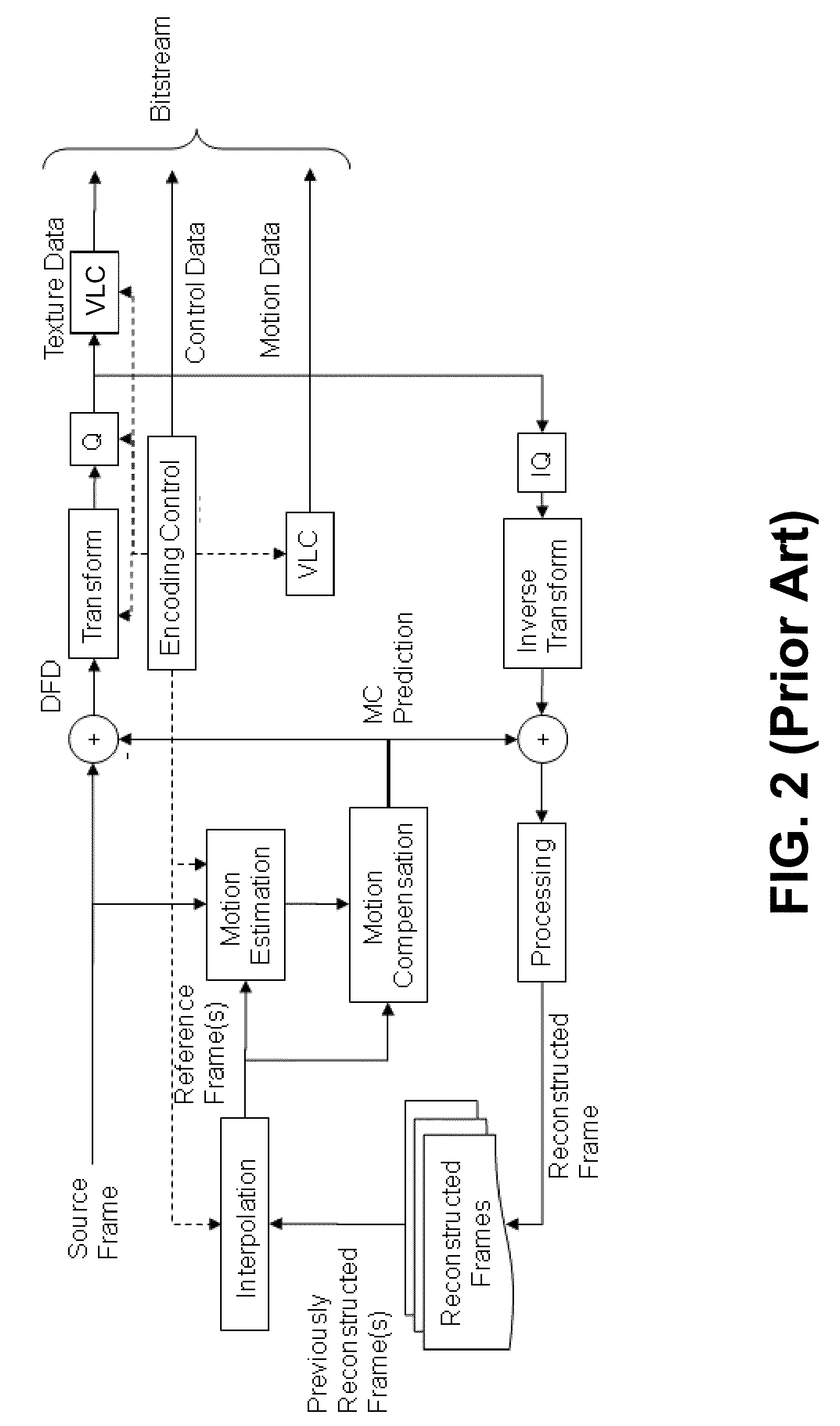Digital image compression by resolution-adaptive macroblock coding
a macroblock coding and resolution adaptation technology, applied in the field of digital imaging, can solve the problems of high data rate, burden on the transmission and storage of high definition video, and the need for significant bandwidth for storage and transmission, so as to achieve the effect of saving bandwidth, reducing bandwidth, and reducing bandwidth
- Summary
- Abstract
- Description
- Claims
- Application Information
AI Technical Summary
Benefits of technology
Problems solved by technology
Method used
Image
Examples
first embodiment
According to the present invention (herein called “RAMB” for Resolution-Adaptive Macroblock coding), macroblocks that contain smoothly varying intensity values can be predicted in a lower-resolution grid by first low-pass filtering and then downsampling the input macroblock. (Here, “downsampling” or “decimating” means representing an original signal with fewer spatial samples. This is achieved by discarding some of the pixels of the original image based on a new sampling grid. Downsampling corresponds to a resolution reduction in the original image.) Because there are fewer residual values to encode in the lower-resolution representation (only 25% of the original resolution residual samples in a downsampling-by-two scenario), a substantial compression efficiency is achieved. In order to decode and display the macroblock in the original resolution, it is “upsampled” by interpolation. (Upsampling, the reverse of downsampling, means representing a low-resolution image in a high-resolut...
second embodiment
According to the present invention (herein called “MAHIRVCS” for Macroblock Adaptive Hierarchical Intermediate Resolution Video Coding System), at the encoder residuals are selectively downsampled, the residual data are reorganized, and the best encoding methodology in a rate-distortion framework is chosen. On the decoder, each decoded macroblock is analyzed, the residual data are reorganized, the optimal method for upsampling the residual data is determined, and the residual data are selectively upsampled.
In some embodiments of MAHIRVCS, a few specific processing elements are added to the structure of an existing codec. FIG. 13 shows how MAHIRVCS-specific processing elements can be added to an existing encoder framework. (Compare FIG. 13 with the prior-art encoder of FIG. 2). Similarly, FIG. 14 shows the incorporation of MAHIRVCS-specific elements into an existing decoder. (Compare FIG. 14 with the prior-art decoder of FIG. 3).
The flowchart of FIGS. 15a and 15b presents one embodim...
PUM
 Login to View More
Login to View More Abstract
Description
Claims
Application Information
 Login to View More
Login to View More - R&D
- Intellectual Property
- Life Sciences
- Materials
- Tech Scout
- Unparalleled Data Quality
- Higher Quality Content
- 60% Fewer Hallucinations
Browse by: Latest US Patents, China's latest patents, Technical Efficacy Thesaurus, Application Domain, Technology Topic, Popular Technical Reports.
© 2025 PatSnap. All rights reserved.Legal|Privacy policy|Modern Slavery Act Transparency Statement|Sitemap|About US| Contact US: help@patsnap.com



